“The levers to solve this problem are in our own hands.”—Joseph Karugia
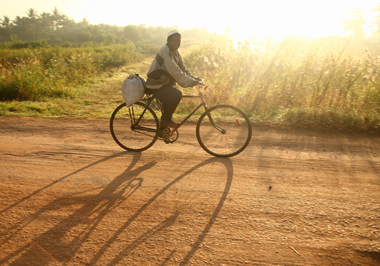
New research showing how the global food price crisis is playing out in 17 countries of eastern and central Africa was presented at a roundtable discussion in Nairobi 22 July 2008.
The research results show that the regional food situation differs significantly from the global one, largely because of this region’s exceptional diversity. That regional diversity provides these countries with opportunities to turn the volatile global and local food situations to their advantage.
By integrating markets and simplifying trade within the region, policymakers can efficiently link areas with food deficits to areas with food surpluses. This integration will help the region’s small farmers get better prices for their crops and livestock while also helping the region’s urban consumers get reliable year-round access to staple food items.
The July Roundtable on the Global Food Crisis was organized by the Kenya country offices of the World Bank and World Food Program and the Nairobi-headquartered International Livestock Research Institute (ILRI). Fifty key decision-makers in agricultural and rural development met on ILRI’s campus to discuss interventions that governments, development agencies, research organizations and nongovernmental organizations could make to help poor people cope with the rising prices of staple foods.
Joseph Karugia, a Kenyan agricultural economist, provided an overview of the regional food situation. Karugia coordinates a Regional Strategic Analysis and Knowledge Support System for Eastern and Central Africa (ReSAKSS-ECA). His review was based on a study led by the region’s leading agricultural research group, the Association for Strengthening Agricultural Research in Eastern and Central Africa (ASARECA). Under pressure by policymakers needing to take action to address the food price crisis, a team of 26 researchers within ASARECA and several centres supported by the Consultative Group on International Agricultural Research (CGIAR) that work in this region, including ILRI, with study activities coordinated by ReSAKSS-ECA, conceived and executed the study together and with speed.
“Our regional food prices have generally risen much slower than global ones,” Karugia said. Even the countries within the region are being affected differently by the global food prices, largely because of their different “food baskets”. Kenya’s main staple is maize, but in Uganda it’s plantain, in Ethiopia it’s teff and in Rwanda it’s beans. Those countries that deal in non-traded commodities are buffered from the rising prices of globally traded staples. “Rice and wheat,” Karugia said, “two hugely important staples globally, are relatively trivial in this region. Moreover, most of the region’s maize needs are met outside the global markets because most people in the region obtain their maize in locally, in informal as well as formal markets.”
One result is that while the food price index (FPI) of the United Nations Food and Agriculture Organization (FAO), which captures trends in major food commodities, rose by 56% between March 2007 and March 2008, the FPI increases in this region were all below 40% and in most cases significantly lower. The FPI increased by 39% in Ethiopia, 20% in Burundi and Kenya, and just 11% in Tanzania. In several other countries in the region, including Madagascar, Malawi, Rwanda, Uganda and Zambia, the increase was less than 10%.

It’s not only the staples of these neighbouring countries that differ. Their climate and rainfall patterns differ, and consequently their planting and harvest times differ, too.
These within-region variations give policymakers a powerful lever for transforming a global food crisis into a regional opportunity for farm producers and urban consumers alike.

“The spatial and temporal distribution of production and staggered harvesting
in the countries of eastern and southern Africa offer large opportunities for trade.”
By integrating the region’s food markets and simplifying its food trade regulations, Karugia said, the region could link up food-deficit to food-surplus areas and thus provide its citizens with staples in an given season. A truly integrated regional market would provide farmers with remunerative prices and alternative reliable markets for their produce while also providing urban consumers and rural net buyers of food with a variety of reasonably priced food staples throughout the year.
Most of the trade in food in this region is informal. It is wasteful not because it is informal but rather because of the many obstacles the informal traders have to face. Karugia explains: “At the border between Kenya and Uganda, trucks laden with sacks of grain and other food staples are unloaded, reloaded onto bicycles, bicycled across the border to be reloaded onto trucks on the other side. This is not an efficient way to move food!”
It would be a shame, Karugia said, quoting the economist Paul Romer, for the eastern and southern Africa region “to waste a good crisis”. “This global food price crisis provides the 19 countries of eastern and southern Africa with a golden opportunity to promote agricultural-led development through increased domestic production, regional trade and integration.”
The ASARECA research presented at this roundtable discussion was a demonstration of this new networked science. Diverse scientists from ReSAKSS-ECA, ASARECA and the CGIAR worked together for months amassing data from country and regional organizations and consulting with key experts and partners within governments, policy think tanks, research institutions, emergency relief agencies and the private sector. Although their individual perspectives on, and interpretations of, the data they collected vary considerably, the research group reached consensus on several points.
• The poor in this region are spending 40 to 70% of their income on buying food.
• The poor are being hit hardest by the rise in food prices, especially the rural net buyers of food.
• Contrary to popular belief, most of the farming households in the rural areas are net buyers rather than net producers of food if price rather than volume of food is considered. Poverty forces them to sell their grain and other crops at harvest time, when prices are at their lowest, and to buy grain again, several months later, when the households run out of the staple, often at two to three times the price at which they sold their grain.
• Prices of agricultural inputs are increasing across the 17 countries of the region. (The price of fertilizer rose 200% in Kenya in the last year.)
• Yields of staple food crops are stagnating or decreasing in 17 of the 19 countries of Eastern and Central Africa (only Egypt and Mauritius are increasing their yields) because farming is moving onto increasingly marginal agricultural lands, causing yield aggregates to fall.

One other salient fact leaped out of the data—the region cannot continue to spend less than 10% (and in some cases as low as 2%) of its national budgets in a sector that provides 25% of the region’s gross domestic product, 75% of its citizen’s livelihoods, and food for 100% of its people. ‘We have neglected our agriculture, our farmers and our food markets for decades,” says Karugia. “This is the result.”
Karugia and his many colleagues in this multi-institutional, multi-disciplinary, and multi-commodity project asked themselves one central question: What levers can we pull to take advantage of the higher food prices? The two conventional answers—increase farm production and control consumer demand—were deemed by the group to be too slow to be useful. This regional group of scientists concluded that a regional strategy for exploiting the food price hikes offered the best opportunities for the most numbers of people: “Exploit the regional diversity by facilitating regional trade”.
Priority actions for such a regional strategy would include the following:
• Markets: Remove export bans, eliminate non-trade barriers, simplify trade regulations and upgrade infrastructure along the region’s main trade corridors.
• Farmers: Reduce the high cost of fertilizer and other agricultural inputs and facilitate their trade, widen use of best-bet agricultural technologies, pilot innovative risk-management strategies such as index-based insurance schemes.
• Institutions: Strengthen market information and intelligence as well as frameworks for preparedness, response and learning.
Addressing these issues in these ways, with evidence-based policy options, is thus feasible, say the study team, and should lead to lowering the prices of food staples while also raising farm productivity and agricultural livelihoods.
In summing up the day’s roundtable discussion, host Carlos Seré, who is ILRI’s director general, said that it’s not only food we should be moving within the region but also the agricultural technologies that allow greater and more sustainable food production. The current food price crisis also has that silver lining: “When you have high food prices, you can move those technologies for improved food production. And you can get attention for neglected alternative crops, such as cassava chips for livestock feed. Which become viable as the price of grain staples rise.”
“This is something happening now,” Seré said. “We need smart interventions that target the region’s poor consumers and farmers alike. We need to get fertilizers into the region’s high potential farming areas. The key thing is to work with markets—to arbitrage across countries and across the region. We must reduce trade barriers within the region, which will greatly improve the efficiency of its markets.”
“We must also think through new crop portfolios for this region,” he continued. “How, for example, could we continue to support maize production in Kenya without penalizing those farmers pursuing a more diversified system that includes sorghum or millet?”
Seré concluded: “Climate and other fast-evolving changes affecting developing-country food production will make our problems worse in future. Finding the institutional frameworks for addressing these problems in collective action is our challenge.”
|
Welcome address by ILRI director general Carlos Seré
In welcoming participants to the roundtable forum, ILRI director general Carlos Seré said: “Global analysis of the food situation is relatively simple. We need to bring the discussion and analysis down to regional levels to increase the specificity, the granularity, of our information.” . . . Read more
Read profile of Carlos Seré
|
|
Interview with Ravi Prabhu, a member of the study team and coordinator of a CGIAR initiative called Collective Action for Eastern and Southern Africa
Let’s take a look at what we heard today from Joseph Karugia and his ASARECA, ReSAKSS-ECG and CGIAR team.
We heard that have opportunities to exploit regional food heterogeneity, capacities and systems that we are not doing a good job of exploiting . . . Read more
|
The latest version of the ASARECA Food Crisis Report is available: http://www.asareca.org/resources/reports/resp2food_pr_main.pdf
Further Information Contact:
 Joseph Karugia Joseph Karugia
Coordinater, ReSAKSS-ECA
International Livestock Research Institute (ILRI)
Nairobi, KENYA
Email: j.karugia@cgiar.org
Telephone: +254 (20) 422 3016
|

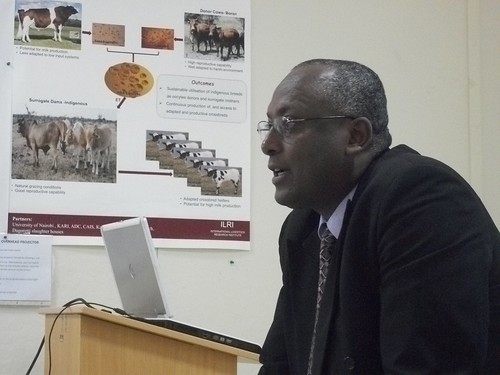


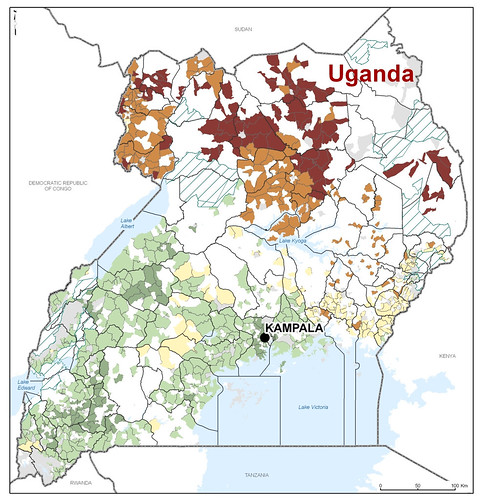
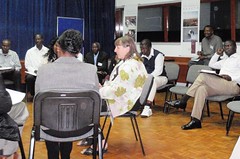
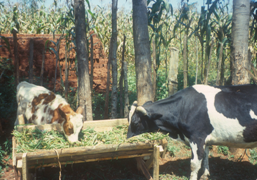 Also called elephant grass, Napier grass is planted on farms across East Africa as a source of feed for dairy cows. Farmers cut the grass for their livestock, carrying it home for stall feeding.
Also called elephant grass, Napier grass is planted on farms across East Africa as a source of feed for dairy cows. Farmers cut the grass for their livestock, carrying it home for stall feeding.

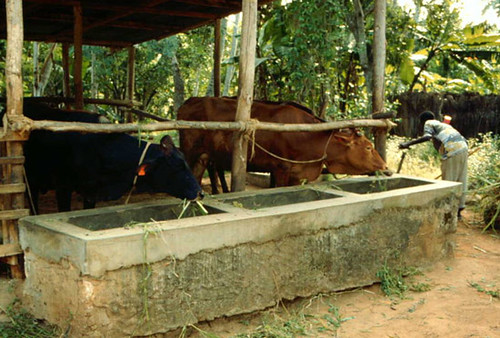




 Joseph Karugia
Joseph Karugia

